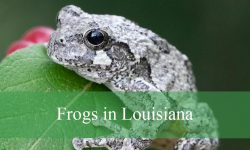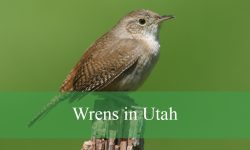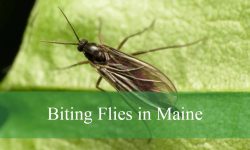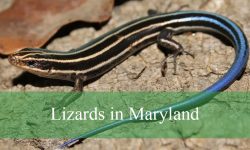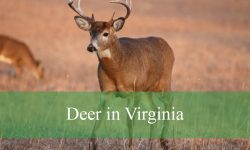In the rugged landscapes of Nevada, quail hold a special place in both the natural environment and the cultural heritage of the region. Their distinctive calls, fascinating behaviors, and adaptability to diverse habitats make them a familiar sight across much of the state. From arid deserts to mountain slopes, quail species have carved out unique ecological niches that allow them to thrive in some of the most challenging environments in the western United States.
Unlike songbirds that often remain hidden in tree canopies, quail are ground dwellers, preferring open spaces, shrubs, and brushy areas that provide both cover and feeding opportunities. Their short, rounded wings are not built for long flights but instead for quick bursts of speed when escaping predators. These traits, combined with their social nature, make them a captivating group of birds to study and observe in Nevada.
This detailed guide explores three species of quail that call Nevada home. We will look closely at their identifying features, habitats, diets, behaviors, and where birdwatchers are most likely to encounter them. Alongside identification tips and ecological insights, you will also find guidance on the best times and locations for observation. By the end, you will have a comprehensive understanding of Gambel’s Quail, California Quail, and Mountain Quail in Nevada.
Gambel’s Quail in Nevada
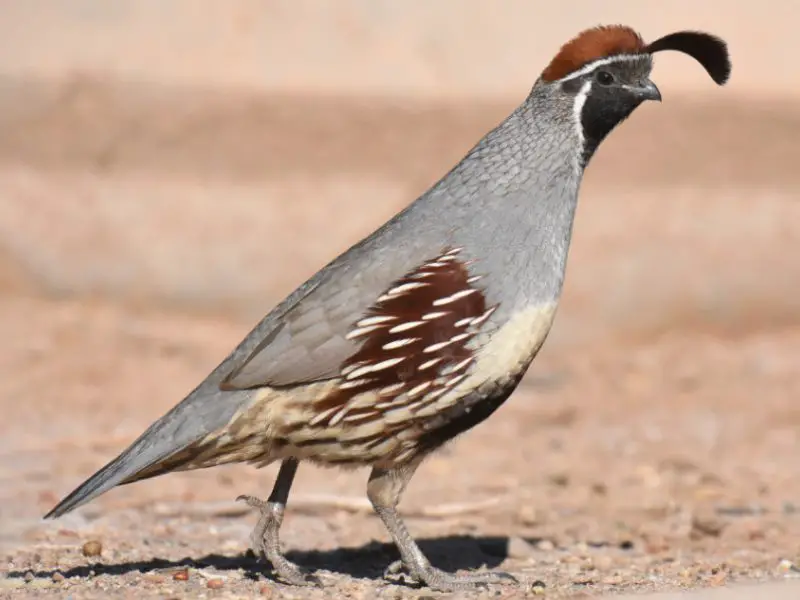
Characteristics and Identification
The Gambel’s Quail is the most widespread quail in Nevada, especially throughout the southern desert regions. This species is instantly recognizable by its striking forward-curving black topknot, a feather plume that stands out against the bird’s otherwise rounded profile. Males are particularly eye-catching with their black face, chestnut crown, and scaled belly patterning, while females are more subdued with grayish plumage but still share the distinct topknot.
These quail typically measure about eleven inches in length and weigh around six ounces. Their stout bodies, short wings, and square tails make them perfectly adapted for staying low to the ground. When disturbed, they prefer to run swiftly rather than take flight, often darting into dense cover. Their coloration blends beautifully with the desert terrain, offering excellent camouflage against sandy soils and rocky landscapes.
Habitat and Range
In Nevada, Gambel’s Quail are strongly associated with desert scrublands, mesquite thickets, and riparian corridors. They thrive in areas where water is accessible, such as near desert springs, washes, or agricultural fields. These birds are especially abundant in Clark County and other southern regions bordering Arizona and California. Unlike migratory birds, Gambel’s Quail remain in their territories year-round, relying on their strong social structure for survival in harsh conditions.
Their preference for arid environments means that observers often spot them near desert vegetation such as creosote bush, sagebrush, and cactus. They are also drawn to backyards and ranches where supplemental food or water sources are available. This adaptability has helped them remain one of Nevada’s most visible quail species despite the challenges of desert living.
Diet and Behavior
The diet of Gambel’s Quail is primarily herbivorous, consisting of seeds, leaves, buds, and cactus fruits. During spring and summer, they also feed on insects, providing extra protein for growing chicks. Their feeding behavior is communal, with coveys often foraging together in the early morning and late afternoon. Coveys can number from a handful of individuals to more than twenty birds, creating a lively and cooperative dynamic.
Breeding season brings notable changes in behavior. Males become more vocal, delivering a loud, descending “ka-KA-kow” call to advertise their territory and attract mates. Nesting usually takes place under low shrubs or grass clumps, where the female lays ten to twelve eggs. Both parents exhibit strong protective instincts, guiding chicks through the desert landscape within hours of hatching. This high level of parental care contributes to the species’ resilience in Nevada’s demanding ecosystems.
California Quail in Nevada
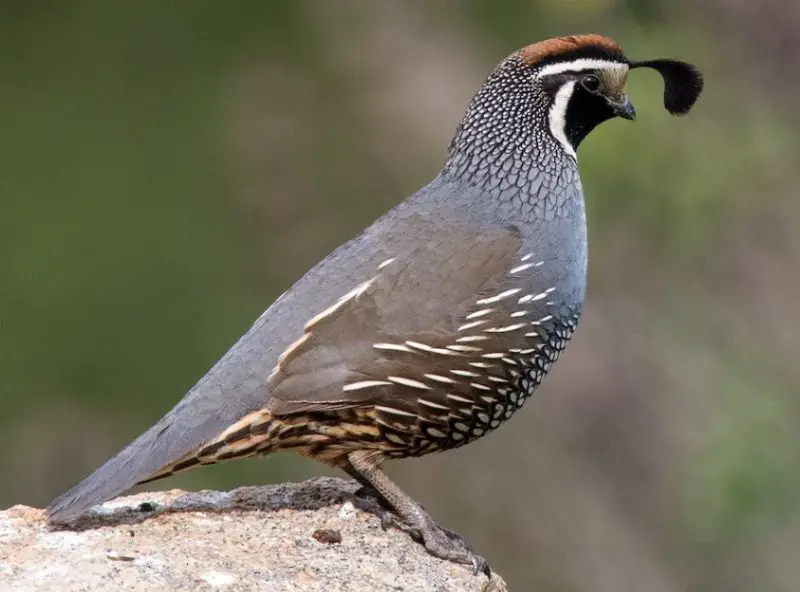
Identification and Features
The California Quail, also called the Valley Quail, shares some similarities with Gambel’s Quail but has distinct features that make it identifiable. Both males and females sport a forward-drooping plume, but California Quail generally display a scaled pattern on their bellies and lack the rich chestnut crown of Gambel’s Quail. Males have a bold black face outlined in white, while females are duller gray with less pronounced facial markings.
Adult California Quail typically measure between nine and ten inches in length and weigh slightly less than Gambel’s Quail. Their compact size and rounded wings allow them to maneuver easily through dense undergrowth. When flushed, they produce a rapid wingbeat accompanied by their characteristic “Chi-ca-go” call, which is often used to maintain contact with flock members.
Range and Habitat in Nevada
In Nevada, California Quail are most often found in the western portion of the state, particularly along the Sierra Nevada foothills and river valleys. Their distribution extends into Washoe County, Carson Valley, and areas adjacent to California. These birds prefer habitats with a mixture of open ground and brushy cover, often inhabiting chaparral, oak woodlands, and suburban areas where food and shelter are available.
Unlike Gambel’s Quail, which dominate southern deserts, California Quail thrive in habitats with higher moisture levels and diverse vegetation. Their presence is strongly tied to the availability of shrubs such as manzanita and buckbrush, as well as agricultural edges where seeds and grains are plentiful. This species has also adapted to urban environments, sometimes appearing in parks and gardens.
Diet and Social Behavior
The California Quail diet centers on seeds, grasses, and leaves, supplemented seasonally with berries and insects. They scratch at the soil with their feet in search of food, often leaving small foraging marks near the edges of trails and fields. During winter, they form large coveys that provide protection from predators and allow efficient sharing of resources.
Their breeding season begins in late spring, with pairs establishing nests under shrubs or in tall grasses. Females may lay twelve to sixteen eggs, and in some cases, communal nesting occurs, where more than one female contributes eggs to a single nest. This strategy increases the chances of chick survival. The family-oriented nature of California Quail, combined with their adaptability, ensures their continued success in western Nevada’s diverse habitats.
Mountain Quail in Nevada
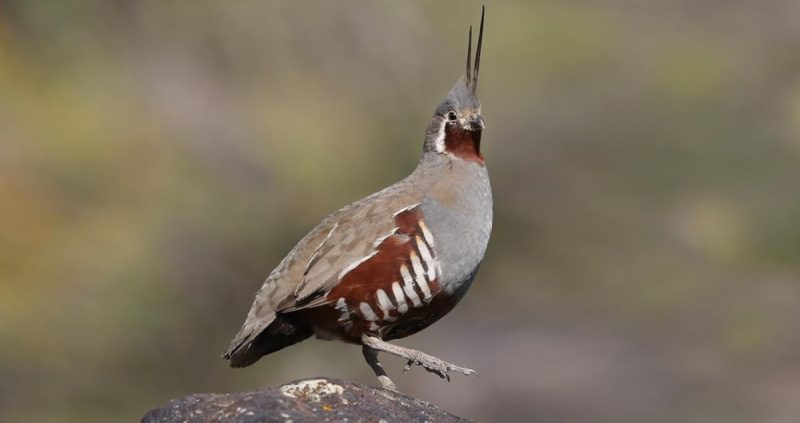
Appearance and Distinct Traits
The Mountain Quail is the largest of all North American quail species, reaching lengths of up to twelve inches and weighing about nine ounces. Its most distinctive feature is the long, straight plume projecting from the top of its head, far more elongated than the plumes of Gambel’s or California Quail. Both males and females display this prominent feather, along with striking plumage that includes chestnut throats, gray backs, and bold white barring on the flanks.
This species’ impressive size and vivid markings make it one of the most striking game birds in the western United States. Despite their beauty, Mountain Quail are notoriously elusive, often hiding in dense cover and using stealth rather than flight to evade predators. Their loud “quee-ark” call can reveal their presence, but spotting them requires patience and careful observation.
Habitat and Distribution
In Nevada, Mountain Quail occupy the higher elevations of the Sierra Nevada and other mountainous regions in the west of the state. They prefer coniferous forests, dense shrublands, and chaparral ecosystems that provide both food and concealment. Unlike Gambel’s Quail that thrive in deserts, Mountain Quail are associated with cooler, wetter environments, often at elevations above 5,000 feet.
Their distribution in Nevada is somewhat limited compared to the other quail species, making them a prized sighting for birdwatchers. They can be found in scattered populations across forested slopes, particularly in areas bordering California. Seasonal movements may occur as Mountain Quail descend to lower elevations during harsh winters, although they remain relatively localized year-round.
Feeding and Breeding Habits
Mountain Quail have a varied diet consisting of seeds, acorns, berries, and green shoots. Insects also make up an important part of their food intake during the breeding season. Their strong legs and sturdy bills allow them to forage effectively on the ground and even scratch through leaf litter for hidden resources.
Breeding usually begins in late spring, with pairs nesting on the ground in secluded spots under shrubs or fallen logs. Clutch sizes are typically between ten and twelve eggs, and both parents play an active role in raising the brood. Because of their secretive nature, observing Mountain Quail families is more difficult than with other species, but their cooperative parenting is a fascinating aspect of their life history.
Best Times and Places to Observe Quail in Nevada
The best time to observe quail in Nevada is during the early morning and late afternoon hours when birds are most active. In spring and early summer, breeding behaviors increase vocal activity, making identification easier through calls. Fall and winter provide opportunities to witness larger coveys foraging together, especially in open areas near cover.
Southern Nevada is particularly rich in Gambel’s Quail sightings, with desert washes and suburban edges offering reliable viewing spots. Western Nevada near the Sierra Nevada is ideal for finding California Quail, while birders seeking Mountain Quail must head into higher forested elevations. Patience, quiet movement, and binoculars are essential for spotting these ground-dwelling birds in their natural habitats.
FAQs about Quail in Nevada
What is the most common quail in Nevada?
The Gambel’s Quail is the most abundant species across Nevada, especially in southern desert regions where they thrive in arid landscapes.
Do quail migrate in Nevada?
Quail in Nevada are non-migratory and remain in their habitats year-round, although Mountain Quail may shift to lower elevations during winter.
Can quail be seen in urban areas of Nevada?
Yes, particularly Gambel’s and California Quail. They often appear in suburban yards, parks, and agricultural areas where food and water are available.
How can I tell the difference between Gambel’s and California Quail?
Gambel’s Quail have a chestnut crown and black face, while California Quail have a scaled belly and a bold black-and-white facial pattern.
Are quail populations stable in Nevada?
Overall, quail populations are considered stable, though local numbers may fluctuate due to drought, habitat changes, and predation pressures.
Conclusion
Quail are an integral part of Nevada’s ecosystems, each species contributing to the biodiversity and charm of the state’s landscapes. Gambel’s Quail dominate the desert south, California Quail enrich the western valleys, and Mountain Quail bring beauty and mystery to the high elevations. Their distinct adaptations reflect the diversity of Nevada’s habitats, from arid basins to forested mountains.
For bird enthusiasts and casual observers alike, quail provide an accessible and rewarding glimpse into the natural world. Observing their behaviors, listening to their calls, and appreciating their resilience deepens our understanding of Nevada’s wildlife heritage. By learning about these three species, we not only enhance our birdwatching experiences but also foster greater respect for the fragile environments that sustain them.

